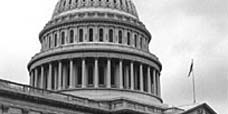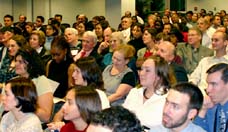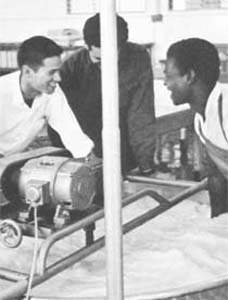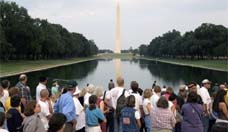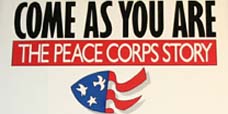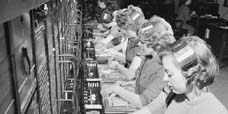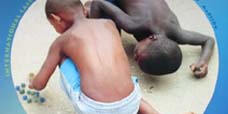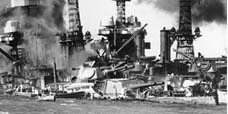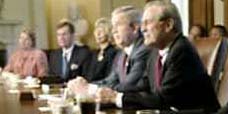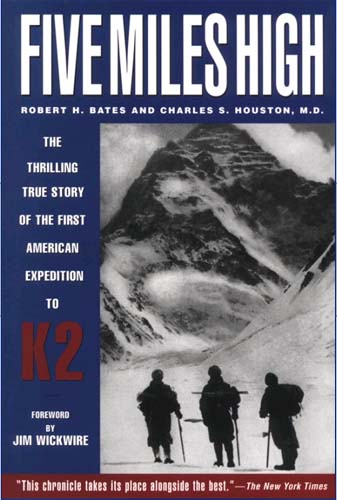
Charles Houston, Mountaineer and Physician
Mountaineer and Physician
The life of 91-year-old Charles Houston has been packed with adventure and achievement. Houston has scaled some of the world's towering mountains. His studies of the altitude tolerance of bomber pilots during World War II were crucial in helping the Allies design strategies to defeat Japanese and German flyers. Later, Houston led the first Peace Corps project in India. As a physician, he helped invent a forerunner of the Jarvik artificial heart and is one of the world's foremost authorities on high altitude medicine. And Charles Houston is also an author, having written a number of books documenting his mountaineering adventures and mountaineering science. Learn more about this high altitude hero below.
In the Snow
Houston the Climber
Charles Houston began his climbing career at the age of twelve on a trip with his parents in the Alps. Although he now says he was terrified by that early experience, a few years later as a Harvard undergraduate, Houston climbed Alaska's daunting peaks Mount Crillon and Mount Foraker.
Houston took his camera along with him in 1936 when he joined a British/American expedition to the Himalayas led by British climber H.W. Tilman. The group was the first to scale the Northern Indian peak of Nanda Devi, then the highest mountain ever climbed. In 1938 Houston led the groundbreaking American Karakoram expedition to K2 in Pakistan. Though Houston and his party did not summit, they reached the cone at 26,000 feet and mapped a climbable route to the top. K2, the world's second highest peak, is thought by many to be a more difficult climb than Everest, a theory borne out by the fact the summit was reached only in 1954 by an Italian team following the route mapped by Houston sixteen years earlier.
Houston returned to the Himalayas in 1950 with a scouting party seeking a southern route to Everest through Nepal. In 1953 he made another attempt at K2 — he recounted the tale of life and death in K2—THE SAVAGE MOUNTAIN. On that trip Houston's friend and climbing colleague Art Gilkey developed blood clots as the team neared the summit. The team, all roped together, carried the sickened climber down in a sleeping bag inch by inch. When one member slipped all took a serious fall and were injured. Gilkey, still in his sleeping bag anchored by ice axes 150 feet away was no longer there when the injured team returned to make another attempt at descent. "I quit [climbing] after the accident because I didn't want to leave my wife and three children without me." Houston and the other members of the expedition received the David Sowles Award of the American Alpine Club for their unselfish action in assisting a fellow climber.
Public Servant
Dr. Charles Houston was educated at Harvard College and Columbia University College of Physicians and Surgeons. During World War II, Houston combined his knowledge of high altitudes with his medical training becoming a Flight Surgeon with the US Navy. As Principal Investigator for "Operation Everest" in which four test persons were taken to a simulated altitude of 29,000 feet, Houston tested and proved his theory that once acclimatized to high altitudes like 15,000 feet, pilots could fly even higher. This discovery gave those flying in unpressured cabins a tactical advantage.
Houston returned to private practice after the war, but returned to the government in 1962 when called to direct the Peace Corps in India. The Director of the Peace Corps, Sargent Shriver, tapped Houston for the job after hearing of his mountaineering and medical experience in the Himalayas. During his three years with the Peace Corps, the volunteer force in India went from six to 250 and prepared for nearly 1,000 more to administer the programs in nursing, farming, English language instruction and construction. After his tenure in India Houston created a Doctors Peace Corps.
High Altitude Physician
As a practicing physician, Houston continued his research into the physical effects of high altitude. In 1957 Dr. Houston's experience treating a sick skier in Aspen led to the documentation in THE NEW ENGLAND JOURNAL OF MEDICINE of what is know commonly known as high altitude pulmonary edema, a life-threatening condition of the lungs caused by a lack of oxygen. While working in Aspen, Houston worked with Dr. Willem Kolff on the development of what would become one of the early models of an artificial heart.
In 1968 as director of the Arctic Institute on Mount Logan in the Yukon Territory, Canada he was the first to identify High Altitude Retinal Hemorrhages. In 1975, he launched the first Mountain Medicine Symposium, which was subsequently expanded and renamed the International Hypoxia Symposium, the premier worldwide venue for high altitude studies. In 1997, he received the coveted King Albert Medal of Merit Award for his contributions to the understanding of mountain sickness and man's acclimatization to high altitude.






